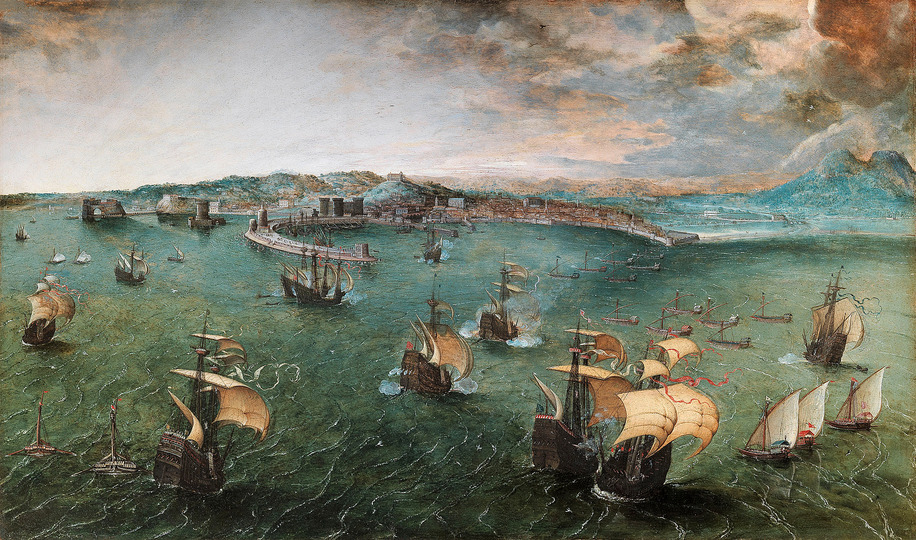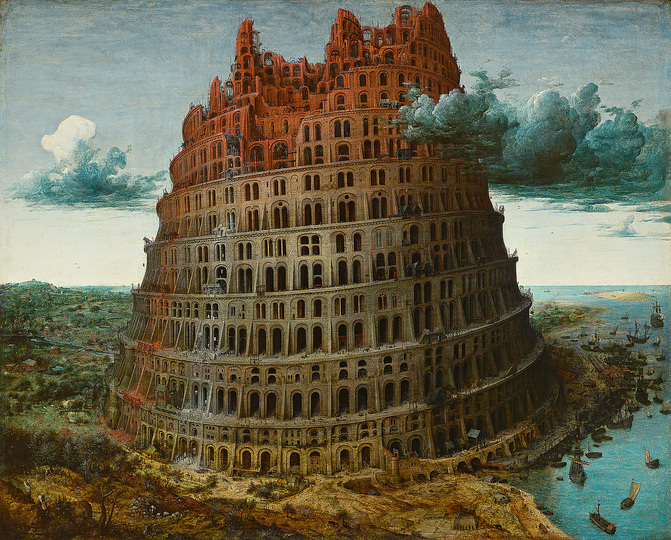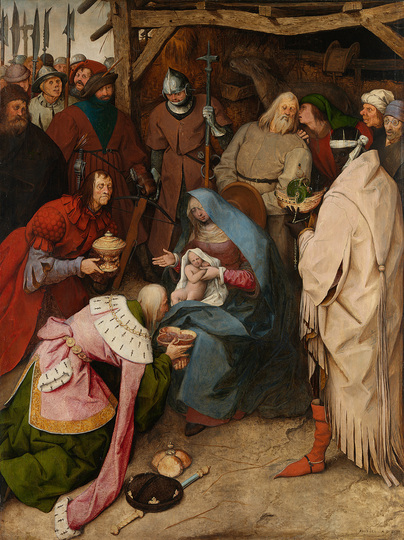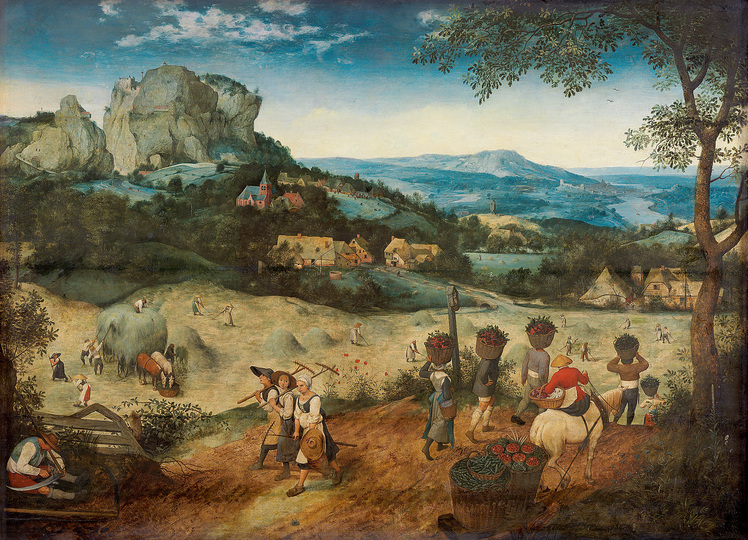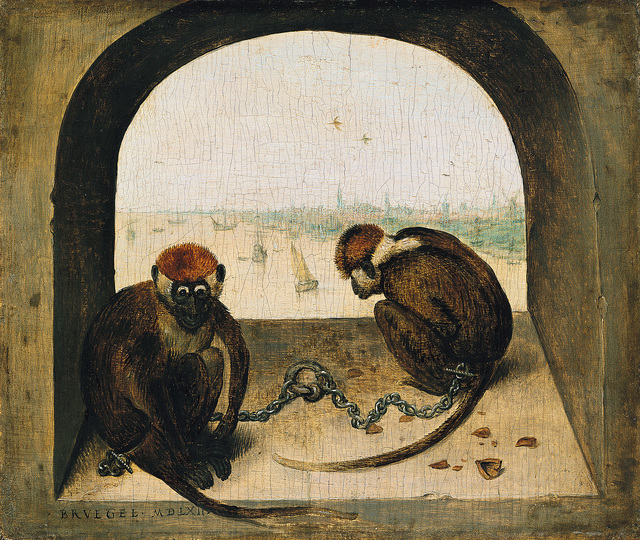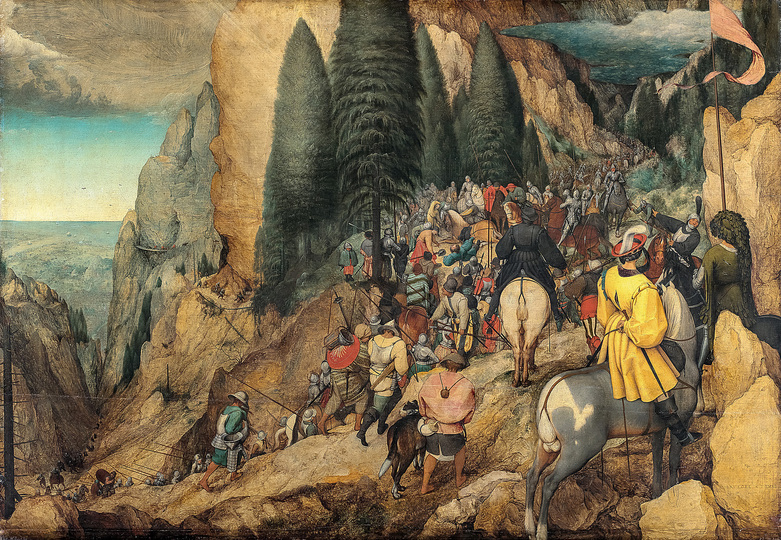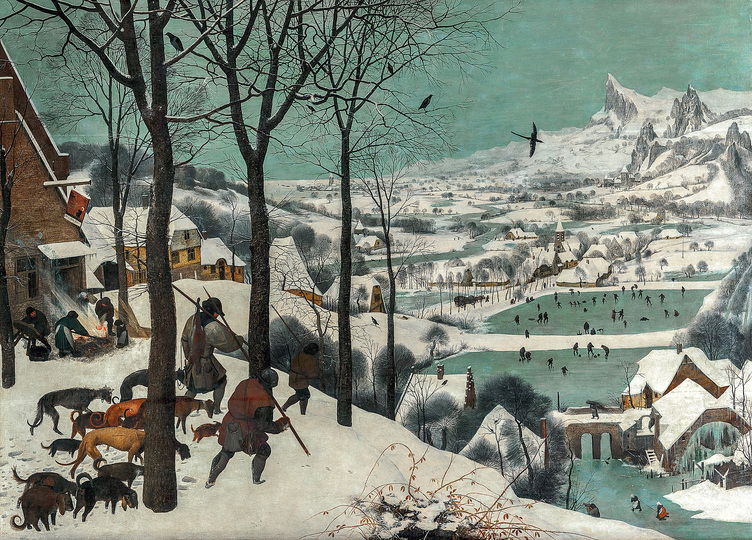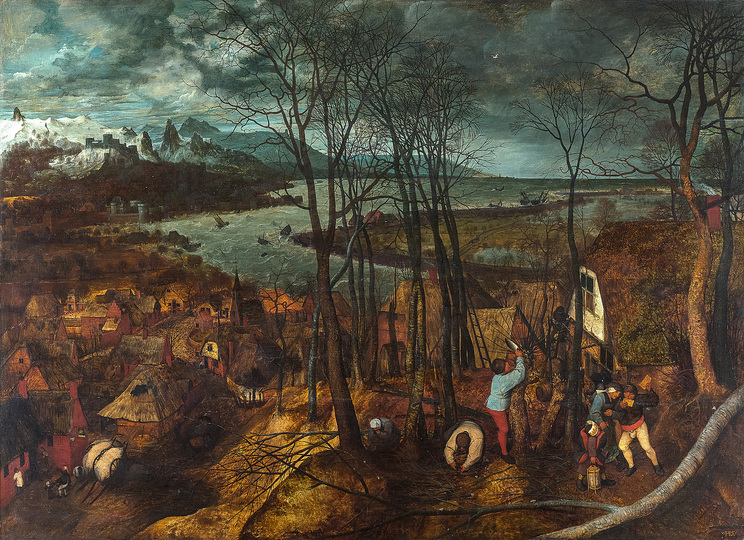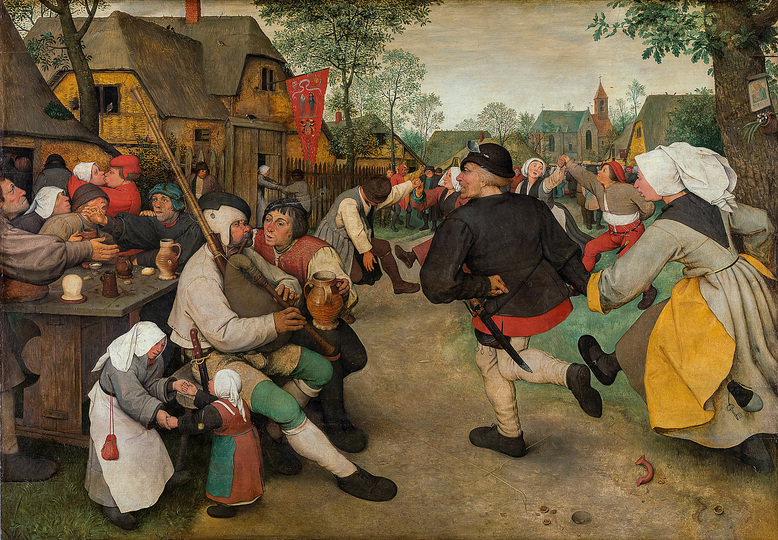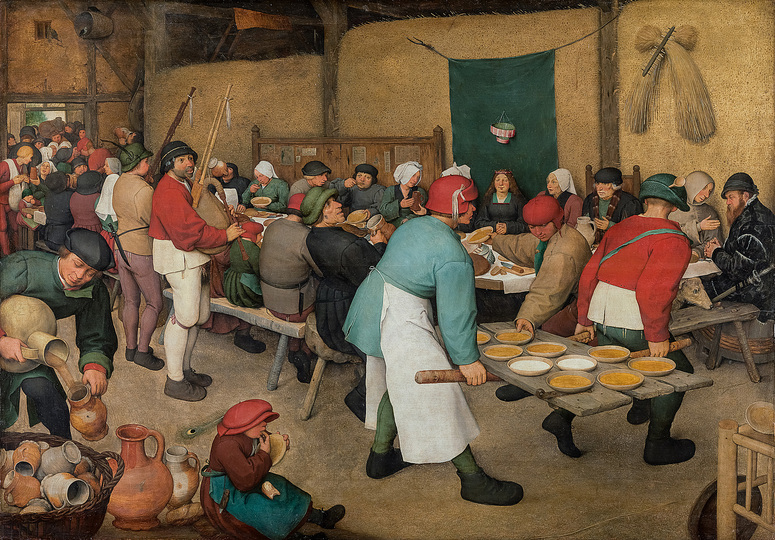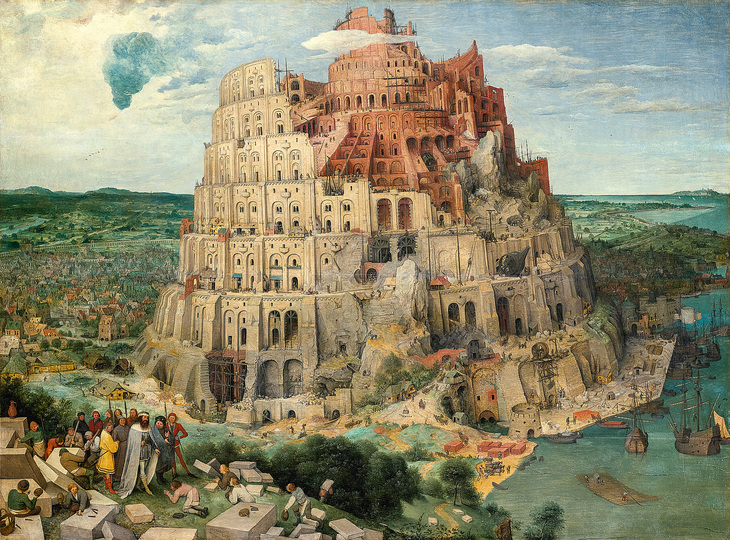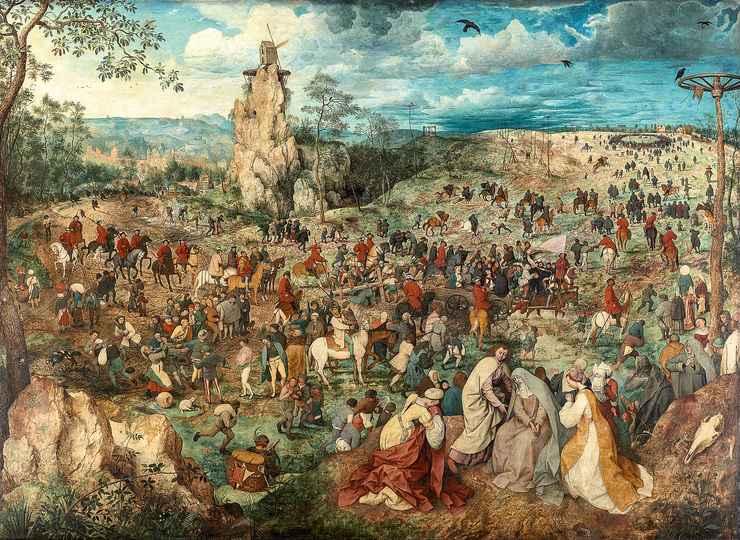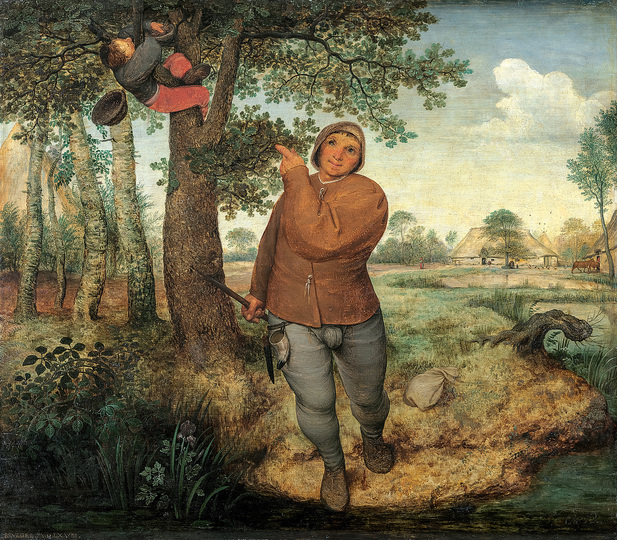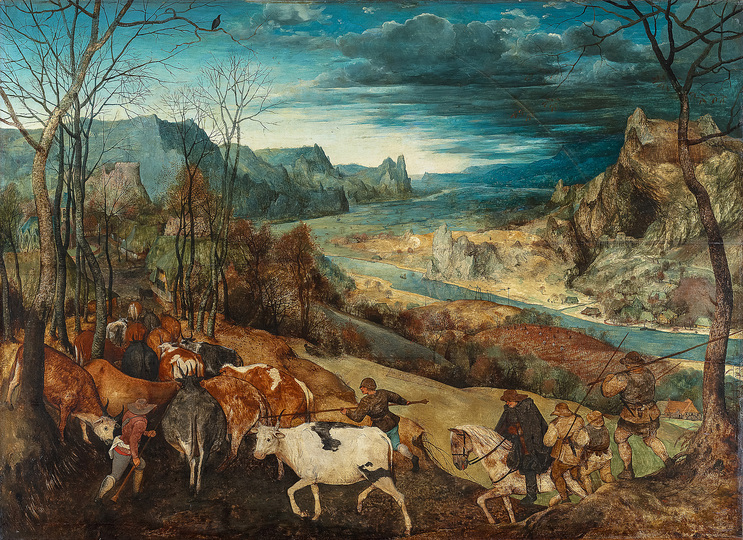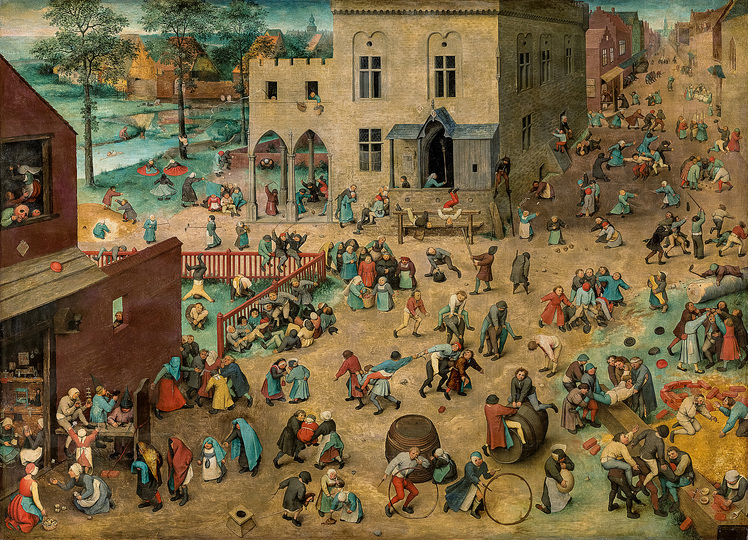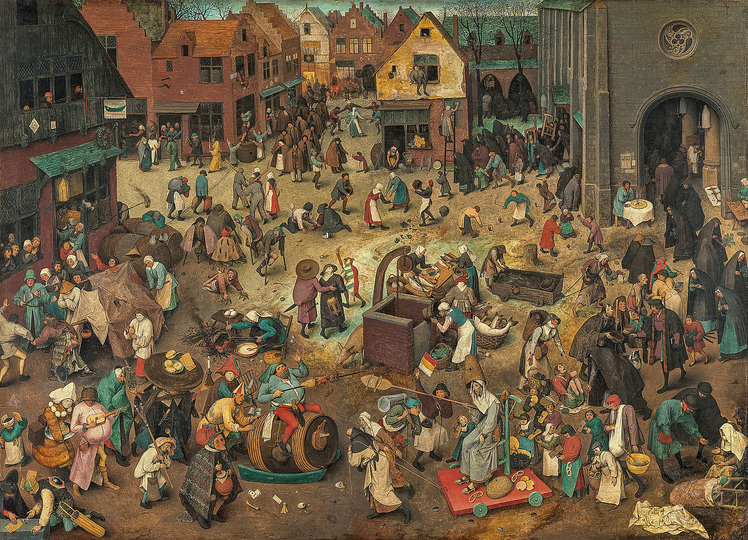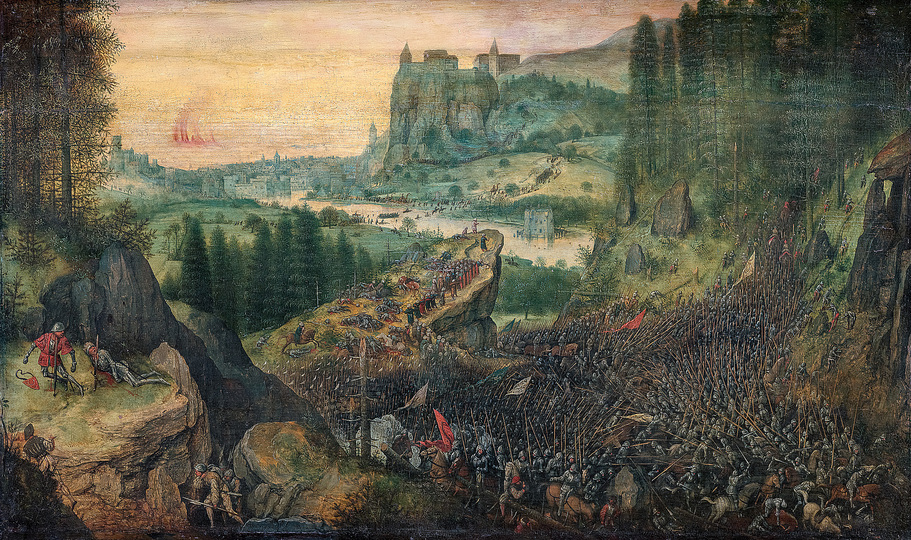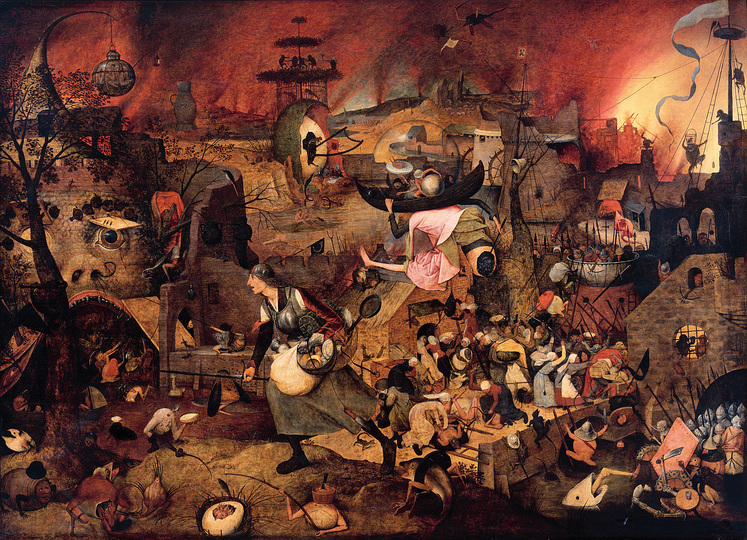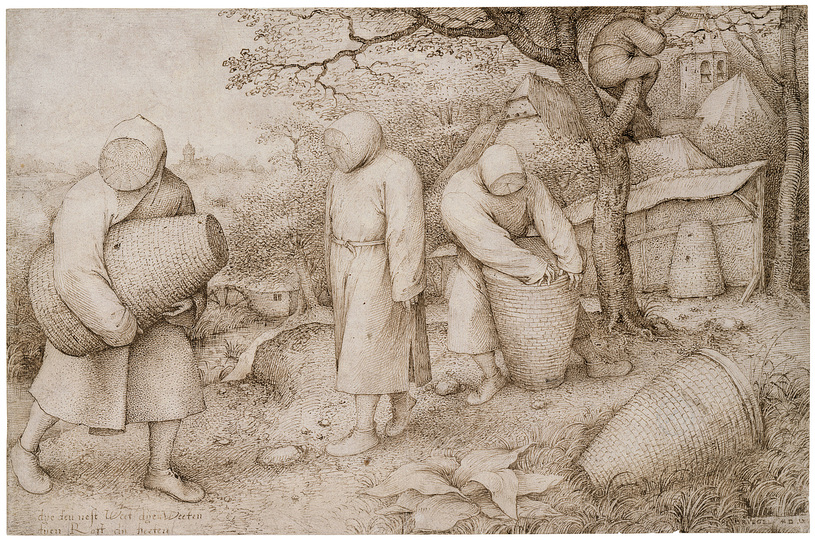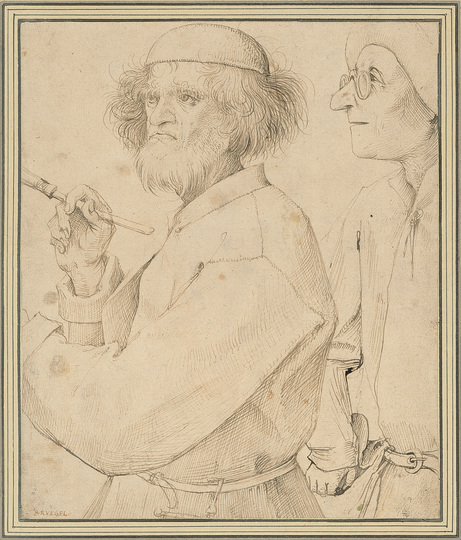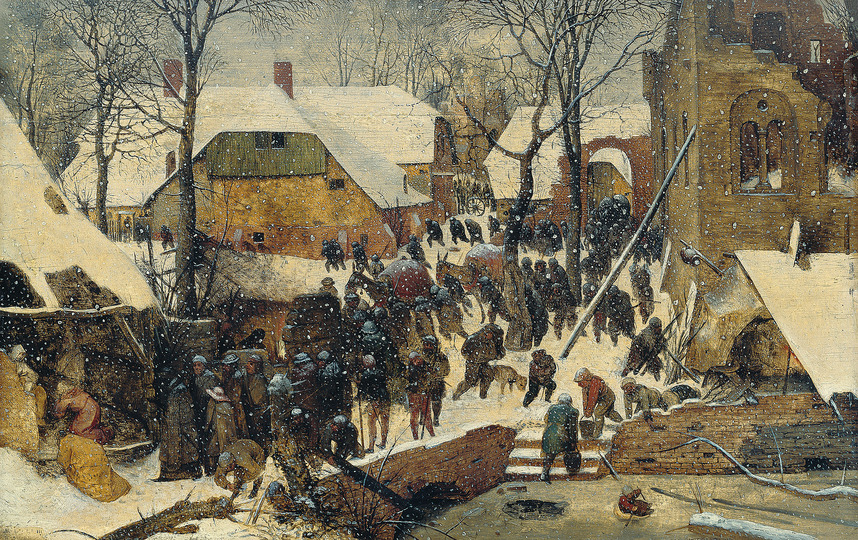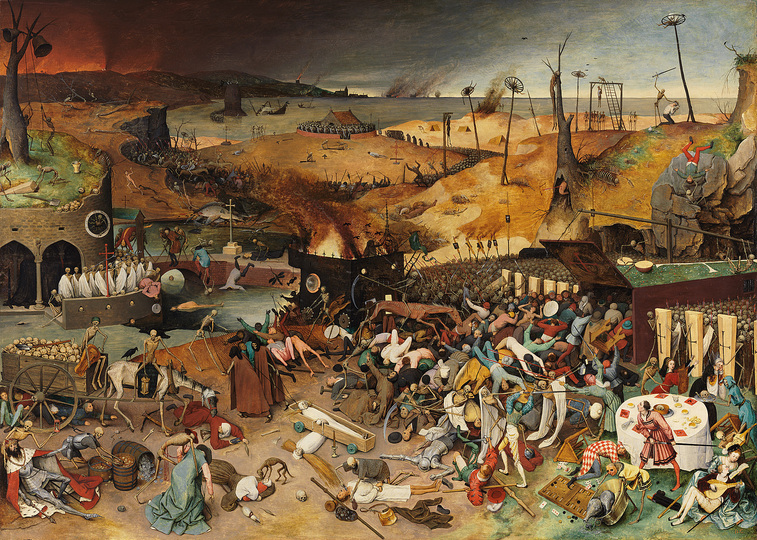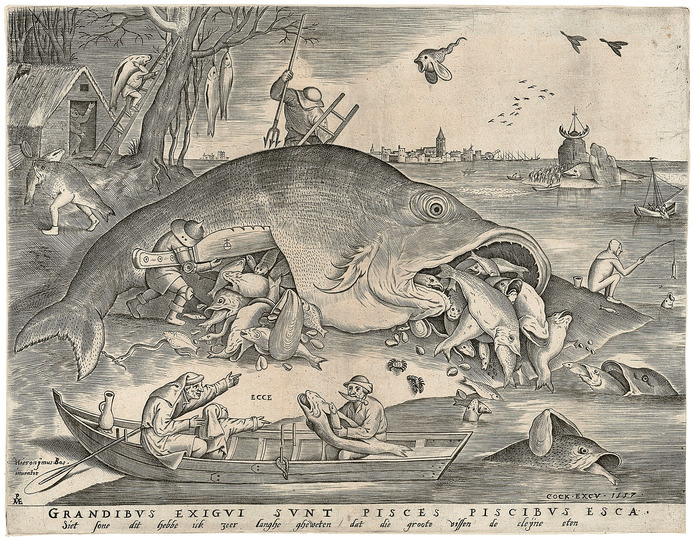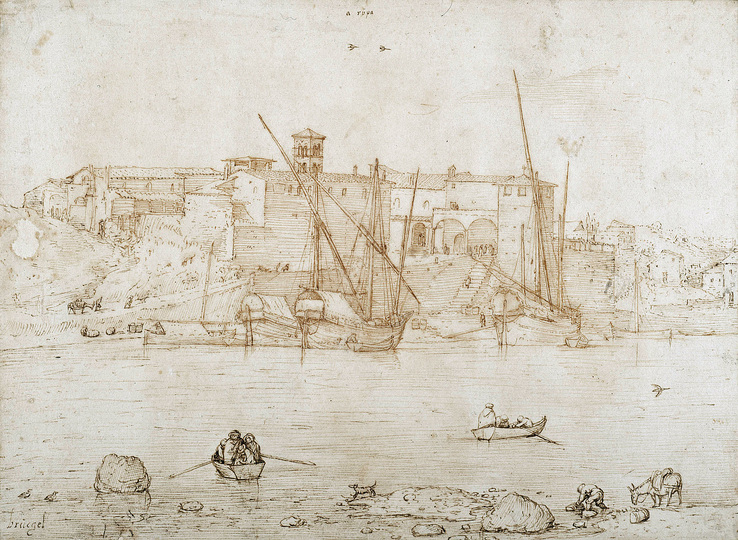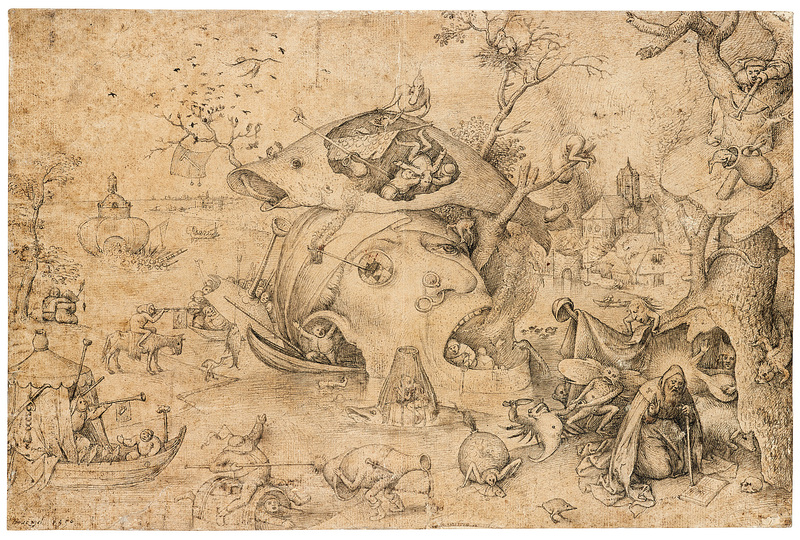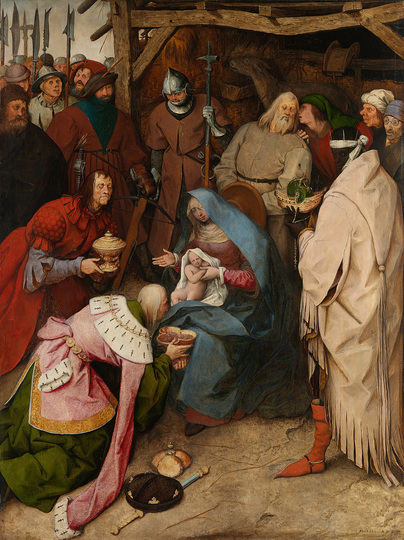Pieter Bruegel
During his lifetime, Pieter Bruegel the Elder was already among the period’s most sought-after artists, with his works achieving exceptionally high prices. Bruegel revolutionised landscape and genre painting, and his compositions continue to elicit varied and controversial interpretations.
Pieter Bruegel trained in the studio of Pieter Coecke van Aelst in Antwerp and was also instructed in the art of miniature painting by the latter’s wife Mayken Verhulst. In 1551 he was admitted as an independent master to the Antwerp painters’ guild. From 1552 to 1554 he travelled through France and Italy. Back in Antwerp he worked for the publisher Hieronymus Cock. From 1562 he mainly worked as a painter. In 1563 he established himself in Brussels, where he died in 1569. Bruegel’s artistic career lasted a mere eighteen years or so. With his relatively small oeuvre, however, he revolutionized landscape and genre painting. In this, engravings after his works played a fundamental role, as unlike his paintings and drawings they were already widely disseminated by the 17th century. Hardly any other artist has undergone such changes in identity over the centuries: from the ‘new Bosch’, ‘Peasant Bruegel’, humanist, moralist or Christian painter to satirist and social critic. We repeatedly seek new paths of access into the work of this great master. An acute observer, Bruegel often holds up a mirror to the viewer, something that makes his work highly immediate and sometimes unsettling, thus giving it a fascinating connection with the here and now.
By bringing together over 90 works by the master, the exhibition at Kunsthistorisches Museum Vienna has assembled a comprehensive overview of Bruegel’s oeuvre.
Pieter Bruegel trained in the studio of Pieter Coecke van Aelst in Antwerp and was also instructed in the art of miniature painting by the latter’s wife Mayken Verhulst. In 1551 he was admitted as an independent master to the Antwerp painters’ guild. From 1552 to 1554 he travelled through France and Italy. Back in Antwerp he worked for the publisher Hieronymus Cock. From 1562 he mainly worked as a painter. In 1563 he established himself in Brussels, where he died in 1569. Bruegel’s artistic career lasted a mere eighteen years or so. With his relatively small oeuvre, however, he revolutionized landscape and genre painting. In this, engravings after his works played a fundamental role, as unlike his paintings and drawings they were already widely disseminated by the 17th century. Hardly any other artist has undergone such changes in identity over the centuries: from the ‘new Bosch’, ‘Peasant Bruegel’, humanist, moralist or Christian painter to satirist and social critic. We repeatedly seek new paths of access into the work of this great master. An acute observer, Bruegel often holds up a mirror to the viewer, something that makes his work highly immediate and sometimes unsettling, thus giving it a fascinating connection with the here and now.
By bringing together over 90 works by the master, the exhibition at Kunsthistorisches Museum Vienna has assembled a comprehensive overview of Bruegel’s oeuvre.
Magazines
